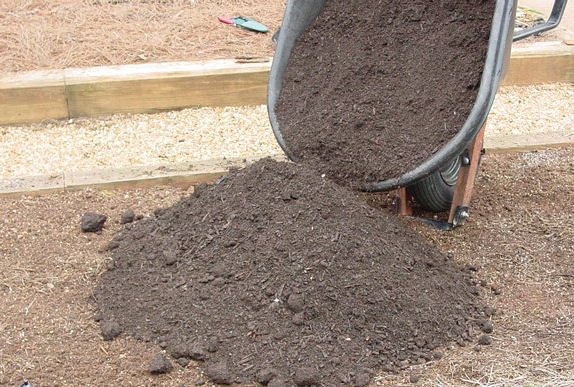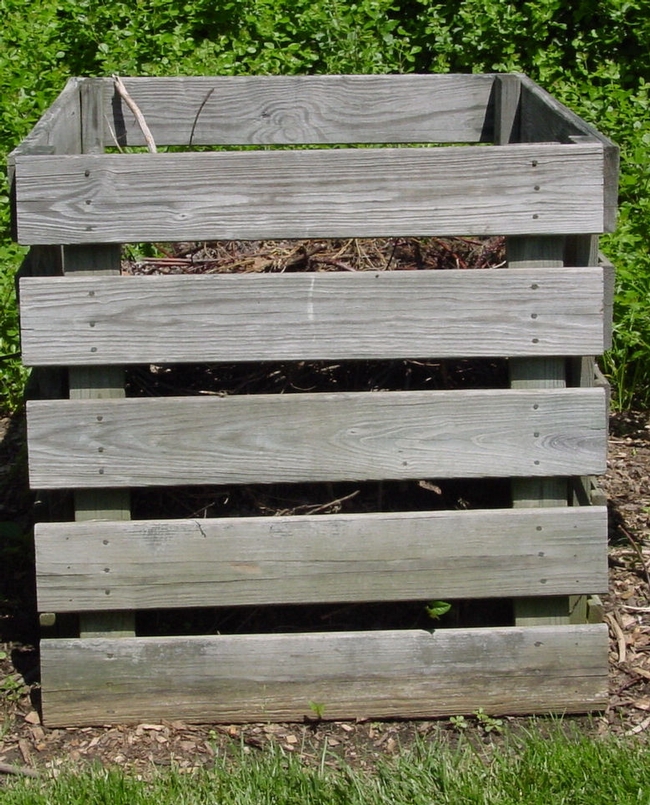Jun 12, 2011
Article reposted from the Weed Science Society of America (WSSA) website. The pdf version of the article is attached at the bottom of the post.
Take care,
Brad
http://www.wssa.net/index.htm
http://www.wssa.net/WSSA/PressRoom/WSSA_Compost_WeedFree.htm

Time, temperature and turning are critical factors
Compost can be a gardener's best friend. It can deliver dramatic improvements in soil quality and nutrients to nourish your plants throughout the growing season. But unless you use the right techniques, you may also find yourself with a bumper crop of weeds.
"Composting is a biological process that decomposes leaves, lawn clippings and other organic materials until they look like rich soil," said Dr. Gary Wade, extension horticulturist with the University of Georgia. "But many of the rich ingredients in the mix can also be a source of weed seeds."
When lawns are mowed, for example, seeds can be collected with the clippings. Seeds can also survive in leaf debris or on mature weeds that you pull from your garden.
Pay attention to time and temperature
If you want to keep weed seeds from sprouting and flourishing in your flower beds or garden, you'll need to ensure your compost gets really warm. With the proper temperature, the volume is reduced, odors dissipate and those pesky weed seeds die.
Within a week, temperatures in a properly constructed compost pile will reach 130 degrees Fahrenheit. That quickly kills many seeds and stabilizes the composted material. But it takes 30 days of exposure to temperatures of 145 degrees or more to kill seeds from tougher weed species. To achieve that temperature, you’ll need the right mix of materials and moisture. (See composting tips below.)
Among the weed seeds that need high temperatures to decompose are common groundsel (Senecio vulgaris), bird's-eye speedwell (Veronica persica), round-leaved mallow (Malva pusilla), common lambsquarters (Chenopodium album), spiny sowthistle (Sonchus asper), ladysthumb (Polygonum persicaria), wild buckwheat (Polygonum convolvulus), field bindweed (Convolvulus arvensis) and broadleaf dock (Rumex obtusifolius).
How do you know whether you've achieved the right temperature? Though compost thermometers are ideal, you can also simply reach into the pile. If it is uncomfortably hot to the touch, you've probably achieved the temperatures you need.
Turn your compost pile
For maximum seed destruction, it's also important to turn your compost. That's because the exposed surface and localized internal cool spots give weed seeds an opportunity to survive. By turning and mixing, you can minimize the problem.
Turning also can help you determine when your compost is ready to use. If the pile fails to reheat after turning, it most likely has reached a biologically stable state. It should have a fine texture and little or no odor.
Remember, though, that effective weed control doesn't end with proper compost preparation.
"The same nutrients that benefit bedding plants and crops will also benefit any existing weeds and give them a real boost," said Lee Van Wychen, science policy director for the Weed Science Society of America. "So it's important to make ongoing weed management a priority on composted beds and gardens."
###

SIDEBAR:
Ten Composting Tips for Home Gardeners
Here is a ten-step formula for building an effective compost pile – based on tips from the U.S. Department of Agriculture and the University of Georgia's College of Agricultural and Environmental Sciences Cooperative Extension Service:
- Select the right site. You’ll need a level location with good drainage. While a compost bin or wire mesh structure can be helpful, it isn’t a requirement. You can start your pile directly on the ground.
- Build from the bottom up. Use a coarse layer of woody material as your base. You’ll have better air circulation and will create a chimney effect that will help to heat your compost pile.
- Add organic waste. You’ll need an eight-inch to 10-inch layer of leaves, grass, plant trimmings or similar material. One caution: Don’t use grass clippings if your lawn has been recently treated with herbicides; instead, leave the clippings on the lawn for at least three mowings. Also, check the herbicide label to make certain there is no restriction on using treated lawn clippings in compost.
- Add a microbial source. Top the organic layer with a one-inch layer of soil or completed compost. Doing so delivers the microbes needed for decomposition and reduces the leaching of mineral nutrients during the composting process. Note: If layers aren’t your thing, you can simply mix each of your composting ingredients into a single heap.
- Add nitrogen. You can use a nitrogen fertilizer such as ammonium sulfate (one-third cup for every 25 square feet of surface area), green grass clippings or even lake plants. Manure is also a good source of nitrogen. But if you decide to use it in your compost, contact your county extension service for advice on safe handling practices.
- Top it off. Repeat the layering process as needed, and then top your pile with five to eight inches of straw or hay.
- Water each layer. You want your compost pile to be moist, but not soggy. Also, scoop out a section in the center to collect rainwater, which serves as an ongoing moisture source.
- Give it air. Punch holes in the sides of your compost pile for aeration.
- Turn it over. Periodically flip your compost to move material from the center to the outside and material on the outside to the center. That will keep the temperatures even throughout.
- Pull them out. If despite your best efforts weed seeds find a cool spot and sprout, make certain you pull them before they go to seed.
Attached Files: